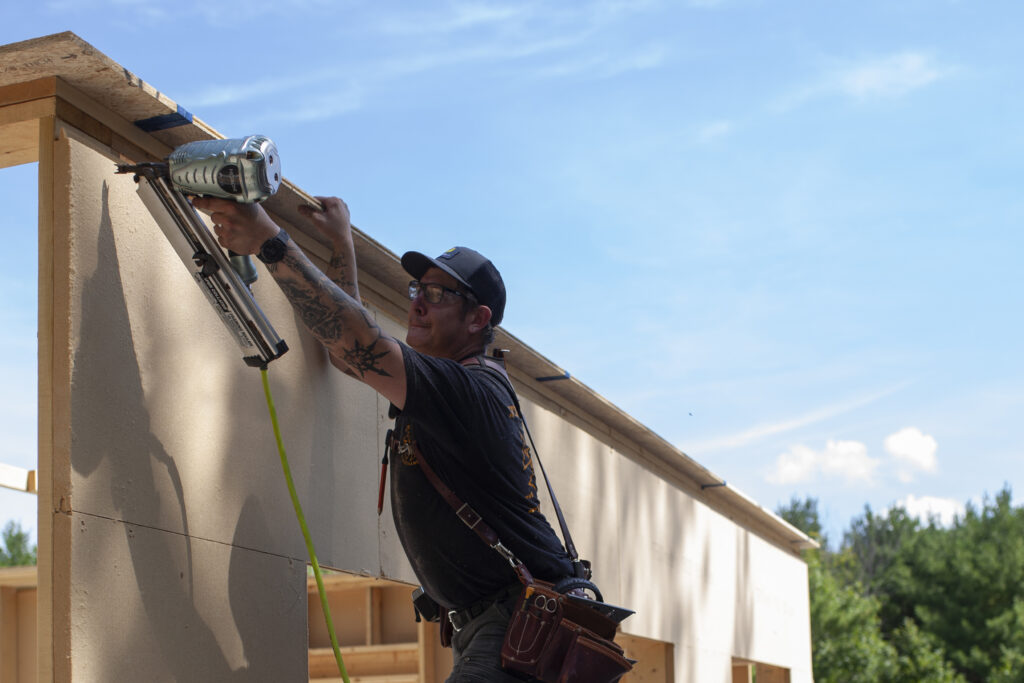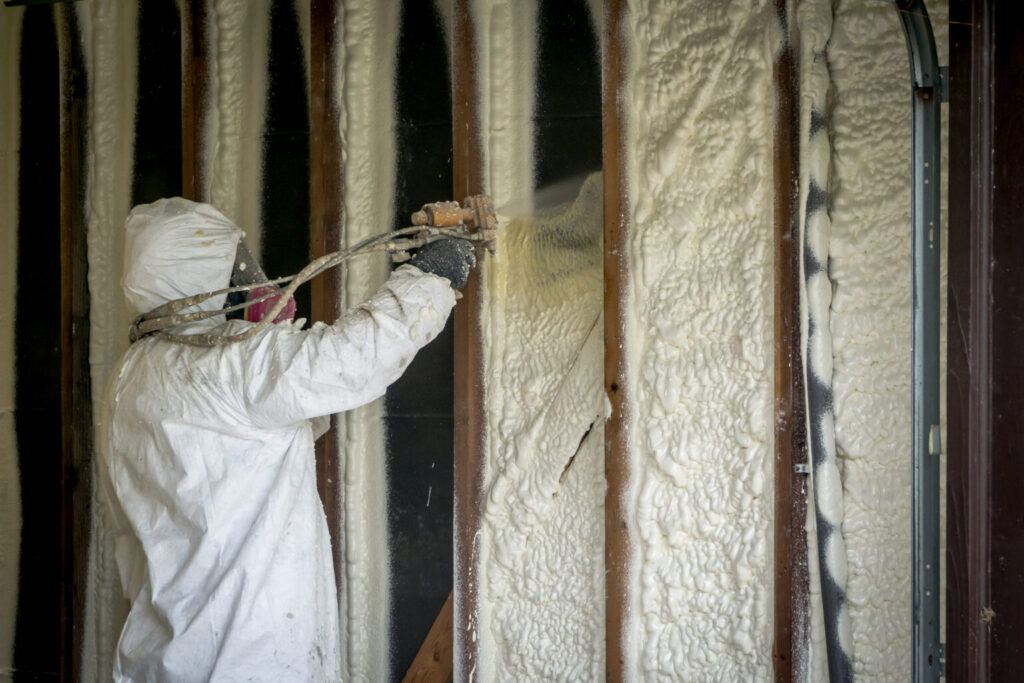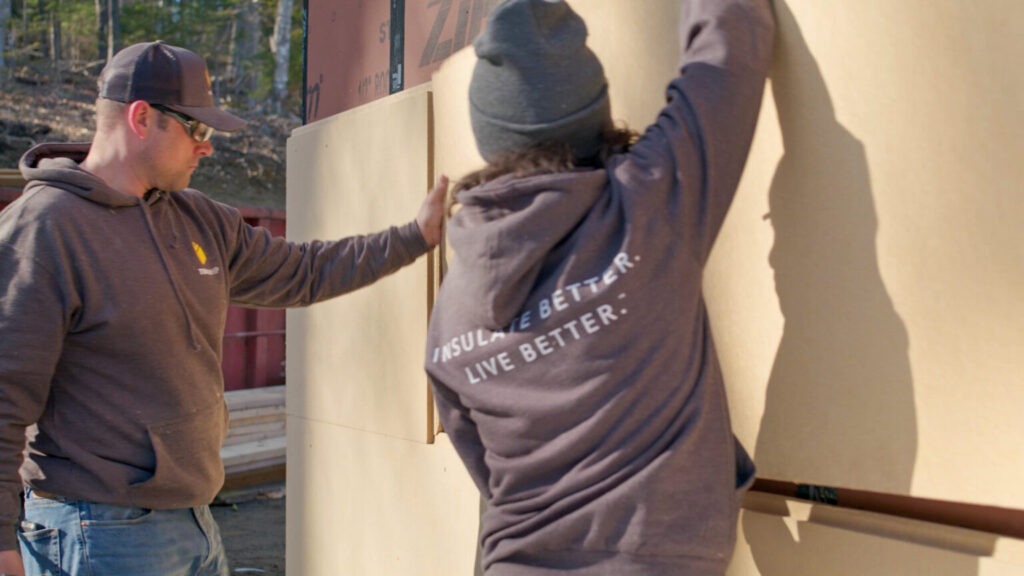Continuous Insulation, a Powerhouse of Performance!

After shivering in a tee shirt once (or maybe twice) most of us accepted our parents’ advice and layered up when the weather got cold. It is easy to appreciate the continuous insulation a sweater or blanket can provide. Here, in the lovely state of Maine, we respect and appreciate a building code that requires continuous insulation on our homes. In a climate like ours, adding this sweater or blanket to our buildings means increased comfort and reduced utility costs—two big reasons we get so excited about insulation!
Why add continuous insulation? Most people understand insulation as the stuff that goes inside the wall. Filling wall cavities with insulation certainly makes a difference, but it is a little like stuffing your sweater between your ribs. Wood framing, the “ribs” of a house, can make up over 25% of the wall. Framing lumber has an R-value equivalent to about 1.25 per inch, less than a third of the R-value of cavity insulation like TimberFill or TimberBatt. If we only consider the framing and insulation parts of the wall (ignoring siding, air film layers, sheathing etc.), a wood framed 2×6 wall with R-21 insulation in the cavity performs at R-14. All that wood framing lowers the overall R-value but of course, we need framing to hold up the house!
Wrapping our homes in a continuous insulation layer of R-5 improves both the framing and cavity R values, pushing the wall’s overall performance to R-20. For math geeks, this is a weighted average of U-values used to calculate parallel heat flow. The good folks at Residential Energy Dynamics here in Maine have a nifty tool to calculate this.
Laboratory vs. Real-itory: In the lab, R-value, or resistance to heat flow, is calculated in a way that does not often match the real world. Heat moves by convection, conduction, and radiation and material R-values are calculated with all these dynamics at play. Once installed in the wild though, some cavity insulations perform better than others. A material’s density can reduce air flow, and in particular convection, within a wall cavity. Fiberglass is one product that just doesn’t live up to its lab tested expectations, as its loose, open fiber structure leads to convective looping in the cavity. TimberFill and TimberBatt install at a higher density, helping to limit this convection.
Closed cell spray foam, a higher R-value product, can also suffer from convective looping. This is not because it is open and air flows through it. Foam can be an effective air barrier if it doesn’t shrink after installation. But it’s hard to trim, so often falls short of filling the entire cavity. If you can hit your R-value target in a 2×6 cavity with 3 or 4 inches of expensive foam, why pay for more? Well, not filling the cavity leaves a void, allowing cold air to slip in from the outside through those lower R-value studs, bypassing all that expensive spray foam!

But wait there’s more: Adding continuous insulation on the exterior of the wall can do a few other important things. By reducing heat loss to the outside, it means convection is less likely to happen because the cavity and framing is kept warmer. This also reduces the potential for condensation. We generate a lot of moisture in our homes and despite our best efforts at adding air and vapor control layers, sometimes moisture finds its way into walls. When it is cold outside, warm air can find a cool surface, like the back of the sheathing, and is essentially squeezed out of the air by reaching a dew point.

In colder climates, we can build more resilient walls with vapor open, continuous insulation like TimberBoard, paired with a good air control layer. Even if condensation does occur in a wall like this, it will escape. If you use foam board as continuous insulation, you reduce the potential for condensation, but can block vapor from escaping (it will find its way in) and risk trapping it against the sheathing. It also means you need to work harder to keep it out with vapor retarders and still not trap it at the same time if it gets past them.
Detailing vapor management membranes on the inside is tricky. Electrical boxes, light switches and gaps at trim and baseboards and around windows are often not that tight. Air moves through them, carrying moisture. Give yourself a break, get comfortable, and power your house with TimberHP performance. It’s as easy as putting on a sweater!